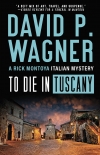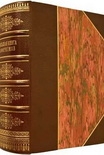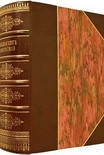To Die in Tuscany, David Wagner [best novel books to read .TXT] 📗

- Author: David Wagner
Book online «To Die in Tuscany, David Wagner [best novel books to read .TXT] 📗». Author David Wagner
They went from a bright room to one that was almost completely darkened. The only lights were those illuminating the Madonna on the far wall, giving the impression that the fresco floated without means of support. The composition was uncomplicated: the pregnant Mary stood in the center flanked by two identical angels holding back the folds of a tent-like pavilion. Her plain blue gown, which extended to the ground, opened slightly where her hand touched the top of her belly. Rick noticed the same haunting features on the Madonna that he’d seen in Piero’s other works. Her eyes were cast downward, in contrast with the two angels, who looked directly at the three people staring back at them through the darkness. After several minutes the museum director broke the silence.
“It is believed that Piero completed the work in seven days, though we don’t know for sure. What is certain is that he was in Monterchi for the funeral of his mother, who was from here. It is not illogical, given the subject and the reason he was here, that he painted it in homage to his mother. There are features of the fresco that indicate that it was done quickly. Or the lack of features, one could say. The subject of the pregnant Mary had been used by other painters of the time, and most of those included religious symbols such as Mary with a book, pendants, or other items that added biblical allusions. Piero’s work has very little of that.” She was standing between Betta and Rick and turned to him. “Also, do you notice anything about the two angels? Besides their being shorter than the Madonna, which you would expect.”
“I imagine you’re asking me because you know Betta has the answer.” He leaned toward the wall. “They look like twins.”
“Bravo, Rick,” said Betta. “Piero used the same paper cartoon for both angels. The technique at the time involved making the drawing and then punching tiny holes along its lines. He attached the paper to the wall and poked the holes to make marks in the surface, then used the dotted image it produced to paint the figure. But in this case he simply flipped over the cartoon and used the holes again on the other side of the Madonna to create a mirror-image angel. Because of that, not only are the faces the same but also the folds in their clothing as well as the position of their arms. Everything.”
Rick’s eyes moved from one angel to the other and back. “Very clever. And he used different colors on the clothing so the trick wouldn’t be as obvious. But that would have certainly allowed him to work quickly.”
“I didn’t mean to give the impression that the work is void of religious symbolism.” The museum director went on to point out other aspects of the fresco and how they fit in with or expanded the iconography of Piero’s time. By the time she finished, Rick knew enough to take over tour guide duties, and the three of them were on a first-name basis. As they stood on the steps just outside the door of the museum, Tucci asked Betta how she got into the art theft squad.
“My father, who owns an art gallery, had cooperated with the office on occasion, so I knew about their work. Thanks to Rick, I became acquainted with the office more directly, and they were recruiting women with an arts background. My degree in art history finally paid off. What about you?”
“I started off as an artist, working in Milan and thinking I could make a living from my work. I did for a while, but soon it became apparent that I needed the stability of a regular salary. I went to the university, got a degree like you in art history, and started working my way through the bureaucracy.” Where they stood offered a view of the green fields that squeezed against the edge of the town. “Sometimes I wonder if I made the right decision. I still miss the Milanese art scene, the excitement when a new artist appears, gossiping over a coffee at a bar near the Brera.” Her eyes looked over the flat land to the northwest, as if straining to see the spires of the duomo. “Shall we be off?”
Tucci had suggested a restaurant just to the north of town, and they followed her black, late-model BMW. It was a car Rick had long coveted but out of his price range even if he ever decided to have a car in Rome. She led them back down the hill, across a small bridge, to the east–west road. They started west toward Arezzo but at the edge of Monterchi turned north in the direction of Sansepolcro. The residential buildings soon disappeared, replaced by the occasional agriculture structure or farmhouse, including a long, low food-processing operation. The passing fields sprouted with sunflowers, corn, and waving plants, most of which Rick was unable to identify. Clumps of trees bordered the cultivated land, some dense enough to be called small forests, but mostly the terrain was open, providing views of distant hills.
Ten minutes into the ride, Tucci signaled for a turn onto a narrow dirt road. Moments later the cars drove up to a three-story brick building that centuries earlier had been built to store crops and livestock on the lower floor and house the family above. They parked and climbed the steps to a porch and the entrance. A waiter spotted them as they came in and pointed to a table near a window overlooking the fields. The large room was half full with a mixture of ages and genders. It was the kind of place that would be packed with families on Sundays, but today the din was benignly low despite cement floors which





Comments (0)